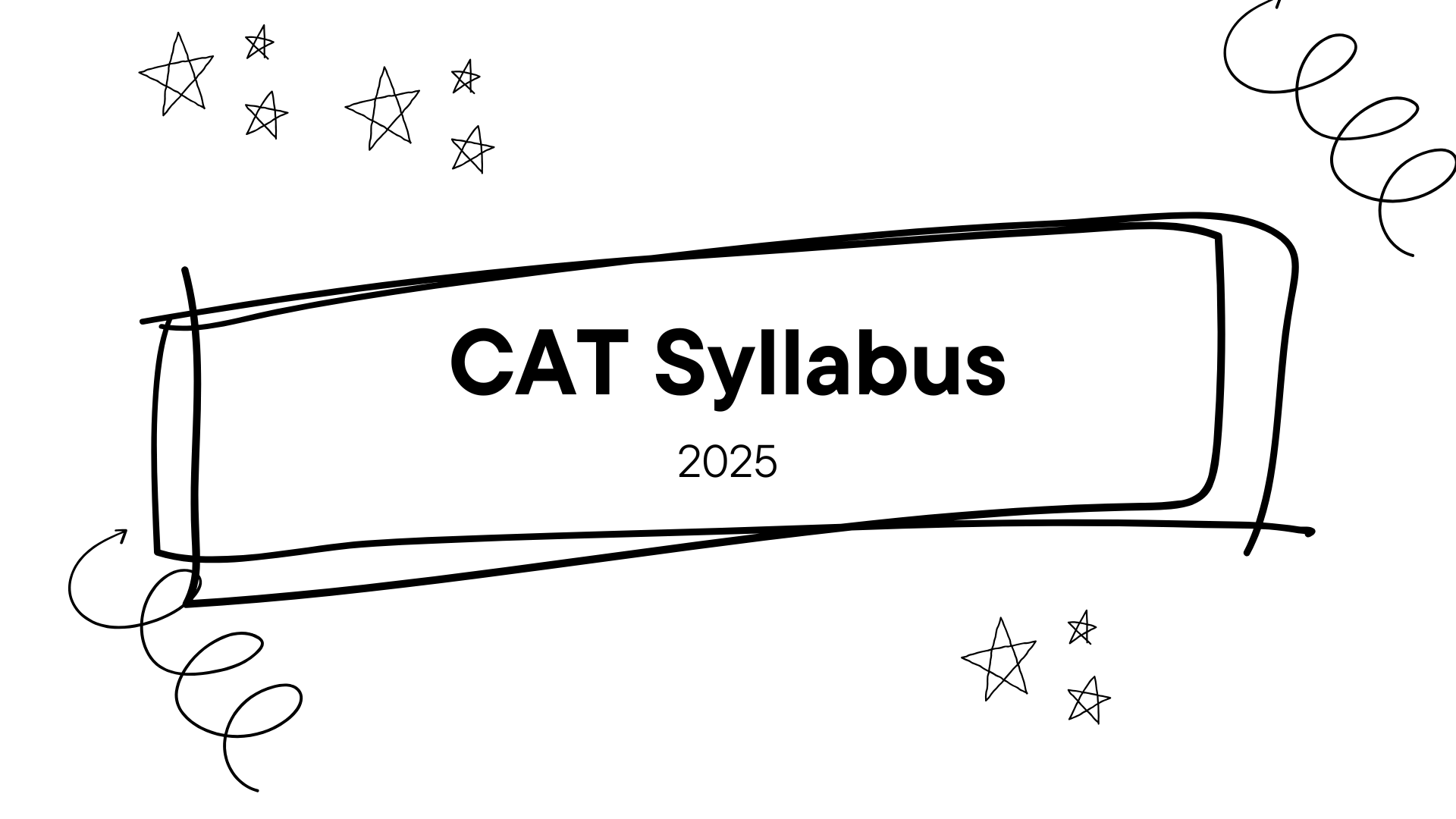The Common Admission Test is the most popular entrance test for candidates seeking admission to MBA programs in the best business schools of India, viz. IIMs. The first strategic step to cracking this competitive exam is to have knowledge of the CAT syllabus. CAT is a high-stakes test in that each year, there are more than two lakh candidates who take the test. The test assesses competencies in three imperative directions, including language abilities, critical thinking, and logic skills. However, the paper structure has not changed over time because the exam body does not released the official syllabus. Therefore, candidates will be able to know what to study using previous years' trends and patterns. As a professional or a final-year student, matching your study schedule against the syllabus is very important in order to study effectively. Some key points about success include knowing what to focus on and what to avoid.
What is Verbal Ability and Reading Comprehension (VARC)
In the CAT exam syllabus, the VARC is the section that tests the ability of an aspirant to command the English language. It consists of two parts, namely Reading Comprehension and Verbal Ability. Passage reading constitutes the largest percentage of the section and is then followed by inference, factual, and vocabulary-based questions. The other section puts stress on para jumbles, sentence drops, summary, and sentence structure. These questions determine whether a candidate can read between the lines and the tone and flow. To become better in this part, one has to regularly read the newspapers, editorials, and high-quality articles. VARC is more of a language intuition than a set of grammar rules. The ability to be strong in this section is not only the skill of using words but also the skill of understanding and vigorous thinking, which any future manager will need to have. It will be helpful to achieve reading speed and accuracy with the help of practicing real CAT passages, as it is an important component of success.
Introduction of DILR Section
Data Reasoning and Logical Thinking (DILR) combines problem-solving skills with data knowledge. This aspect of the CAT exam syllabus in MBA contains sets of problems that require data sets, puzzles, sequences, and conditional arrangements. The sets of problems normally contain 3 - 4 similar questions and demand multi-level thinking. DI questions can be about bar charts, tables, and pie graphs, whereas LR questions can be about games, seating arrangements, and coding-decoding logic. The unpredictability of DILR implies that the candidates will rather be ready to answer sets of moderate to high difficulty. You must be able to reason with sharpness and manage time besides knowing formulas. Speed and logical accuracy can be improved in a significant way by taking the mocked tests and practicing them every day. Because every question in a set is interrelated, the strategy of solving questions is more than single accuracy. DILR is the part where you also need smart thinking as it is as important as hard preparation.
Quantitative Ability:
Quantitative Ability (QA) challenges your numerical ability. QA CAT syllabus will have core school mathematics as part of their schooling. It consists of arithmetic, algebra, geometry, number systems, and modern math. Mathematical units such as percentages, time, work, and averages are overemphasized. Algebra involves equations, inequalities, and sequences, whereas geometry involves mensuration and coordinate geometry. Although they involve commonly known ideas, CAT QA questions require thinking and fast calculations. In this range, one can find both MCQs and TITA (Type In The Answer) questions, and they also have to be accurate and have a logical progression. In order to excel in this area, the students will have to pay attention to the clarity of concepts and smart shortcuts. Practicing a certain amount of problems (15-20 QA problems a day) with Vedic math tricks will increase the speed and accuracy of calculations. The performance here is also a real boost in your percentile.
Latest CAT Syllabus 2025 – Topic Table
Here is a table outlining the current topic distribution of CAT:
| Section | Topics Covered |
| VARC | Reading Comprehension, Sentence Rearrangement, Paragraph Summary, Para Jumbles, Odd Sentence Out |
| DILR | Tables, Bar Graphs, Line Charts, Puzzles, Seating Arrangements, Venn Diagrams, Blood Relations |
| QA | Arithmetic (Time-Speed-Distance, Percentages), Algebra (Equations, Inequalities), Geometry, Number System, Permutation & Combination |
Format of the exam and other important details
Although it is important to concentrate on the syllabus, it is also important to know the details of the CAT exam. The exam lasts two hours, including three parts, with a fixed duration of 40 minutes. It has MCQs and non-MCQs. All the correct answers fetch +3 marks, whereas there is a -1 penalty on wrong answers in MCQs. TITA questions are not negatively marked. Generally, the number of questions is 68, including 24 questions in VARC, 22 questions in DILR, and 22 questions in QA. It is impossible to change sections during the exam; therefore, time management is very important. There should be a strategy that is grounded on the strengths and weaknesses in maximizing efforts within the available time. This will keep things in check so that there is no surprise on test day.
Conclusion
One cannot merely cover areas of the CAT syllabus; it takes as much mastering of a preparation strategy as anything. By being aware of what kind of questions they are, their difficulty, and their weightage, you will more efficiently spend your time and efforts. The entrance exam for MBA via CAT includes a combination of logic, language, and math, and these are all conducted under time constraints. The CAT exam syllabus also aids in removing distractions and studying intelligently. Track your improvement using previous papers, mock tests, and in-depth analysis. It does not matter whether you want to get into IIM Ahmedabad or any other good college; the game starts with a shrewd knowledge of the CAT syllabus.

